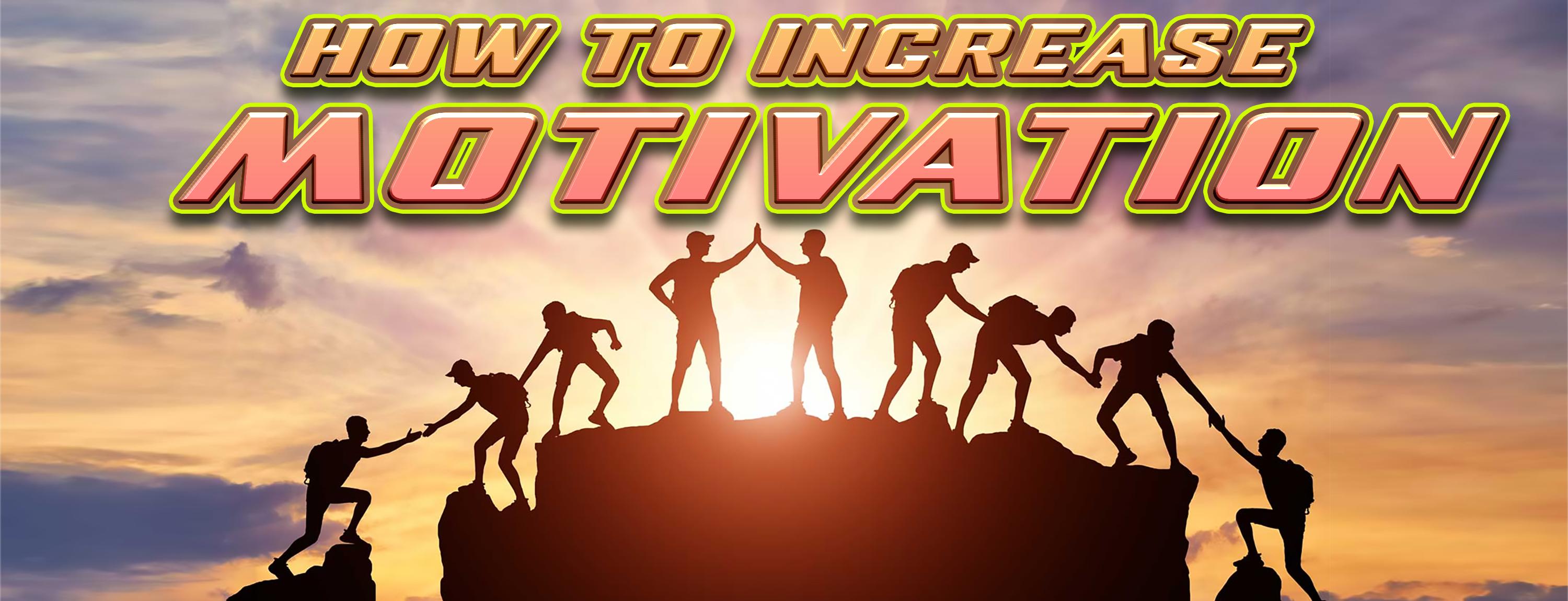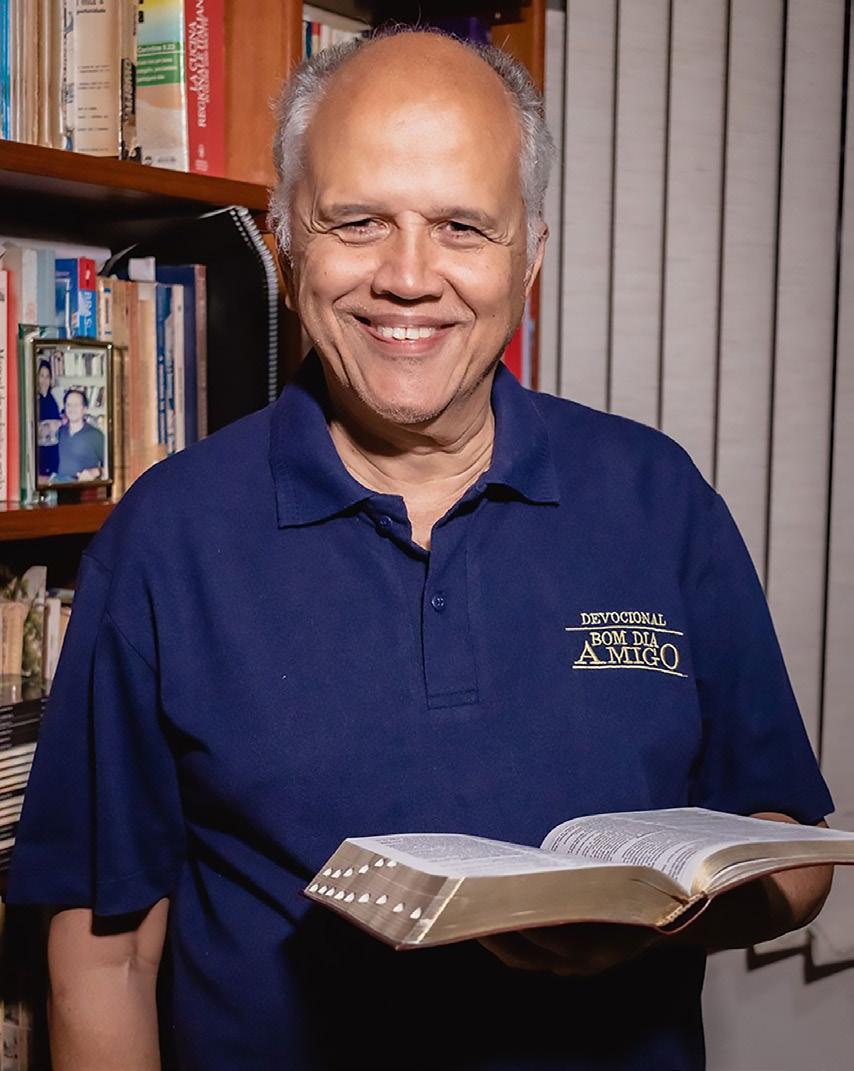





Financial success is a goal that many people strive for, but it's not always easy to achieve. In order to build wealth, pay off debt, and achieve our financial goals, we need to have a solid plan in place. This plan should be built on a foundation of organization and discipline.

Organization is the key to keeping track of our finances and making sure we are on track to meet our goals. Without organization, it's easy to lose track of our spending, forget about bills that need to be paid, or miss out on opportunities to save money.
Discipline is the ability to con-
trol our behavior, even when it's difficult or uncomfortable. When it comes to finances, discipline is essential for staying on track with our financial goals and resisting the temptation to overspend or make impulsive purchases.
In this article, we will explore the importance of organization and discipline for financial success and offer tips for cultivating these skills in your own life.
Organization: The Foundation of Financial Success

Organization is a fundamental skill for managing our finances effectively.
CONTINUES ON PAGE 3
Contact: Phone: (347) 600-5347


e-mail: cartasaoeditor@aol.com
Website: www.omensageiro7. com

©2023 by: O Mensageiro7Inc.
All Rights Reserved
The Newspaper O Mensageiro7 is a monthly publication via ONLINE in English, Portuguese, and Spanish.
Reproduction in whole or in part of the context of the publication without proper permission is expressly prohibited.
O Mensageiro7 Newspaper is not responsible for the insertion of photos, logos, slogans, errors or omissions by advertisers or information provided by third parties, edited in any part of this publication.
Articles, messages, interviews, and studies published in this Newspaper, by each author, do not necessarily reflect the opinion of the Editor.
Each writer is responsible for their own content.
Therefore, each author is available to answer the reader's questions.
CONTINUING FROM PAGE 2
Here are some ways that or ganization can help us achieve financial success:
•KEEPING TRACK OF INCOME AND EXPENSES:

By tracking our income and expenses, we can understand where our money is going and identify areas where we can cut back. This can help us save more money and pay off debt faster.

•PAYING BILLS ON TIME:
Late payments can lead to fees and damage our credit score. By staying organized and keeping track of due dates, we can avoid these consequences and maintain good credit.
•MAXIMIZING TAX DEDUCTIONS:



By organizing our receipts and financial documents, we can take advantage of tax deductions and save money on our taxes.
DISCIPLINE: THE KEY TO STAYING ON TRACK
Discipline is the ability to control our impulses and stick to our goals, even when it's difficult or uncomfortable. Here are some ways that discipline can help us achieve financial success:
•STICKING TO A BUDGET:
By setting a budget and sticking to it, we can avoid overspending and ensure that we have enough money for our financial priorities.

•AVOIDING DEBT:

By resisting the temptation to take on debt, we can save money on interest and avoid the stress and financial burden that comes with debt.
•PRIORITIZING FINANCIAL GOALS:
By staying focused on our financial goals, we can resist the temptation to spend money on things that don't
•PLANNING FOR THE FUTURE:

By organizing our finances and setting up a budget, we can plan for the future and ensure that we have enough money saved for emergencies, retirement, and other long-term goals.
By making saving a habit and setting up automatic transfers to our savings accounts, we can ensure that we are consistently saving towards our goals.

Without organization, it's easy to lose track of our spending, forget about bills that need to be paid, or miss out on opportunities to save money.
CONTINUING FROM PAGE 3
TIPS FOR CULTIVATING ORGANIZATION AND DISCIPLINE

Here are some tips for cultivating organization and discipline in your own financial life:
•USE A BUDGETING TOOL:
There are many budgeting tools available online or as mobile apps that can help you track your spending and stay within your budget.

•SET SPECIFIC FINANCIAL GOALS:

By setting specific goals for saving, debt repayment, and other financial priorities, you can stay motivated and focused on your long-term objectives.

•AVOID IMPULSIVE PURCHASES:

Before making a purchase, ask yourself if it's a want or a need. If it's not a neces-
sity, consider waiting a few days before making the purchase to see if you still want it.
•AUTOMATE YOUR FINANCES:
Set up automatic transfers from your checking account to a savings or investment account to ensure you are consistently saving money towards your financial goals.

•REVIEW YOUR PROGRESS REGULARLY:

Check in on your financial
goals regularly and adjust your plan as needed. Celebrate your successes and learn from your mistakes to stay motivated and on track.
•STAY ACCOUNTABLE:
Share your financial goals and progress with a trusted friend or family member who can offer support and encouragement.
spend or make impulsive purchases and use strategies like delaying gratification or practicing mindfulness to stay on track.
•STAY ORGANIZED:

Keep your financial documents, receipts, and bills in a designated place to ensure that you can easily track your spending and bills.
In conclusion, organization and discipline are essential skills for achieving financial success.
By staying organized and disciplined, we can stay on track with our financial goals, resist the temptation to overspend or take on unnecessary debt, and ensure that we are consistently saving and investing towards our long-term objectives.
By following the tips outlined in this article, you can cultivate these skills in your own financial life and achieve the financial success you desire. ◙

•PRACTICE SELF-DISCIPLINE:
Recognize when you are feeling tempted to over-

Organization and discipline are essential skills for achieving financial success.
All of our human senses — including hearing — are processed by the brain.
Keeping the brain active by stimulating it in a variety of ways can protect brain health, particularly as we age. This is why listening to music is one of the activities that can have a positive effect on brain health.
Let’s take a closer look at how music affects the brain and helps to keep it young and healthy.
It stimulates most of the areas of your brain
Music activates almost all of your brain’s different regions and networks. It also strengthens connections between different parts of the brain.
This includes the areas responsible for:
•Emotions
•Memory
•Learning
•Well-being
•Cognitive function, including focus and concentration
•Quality of life
•Movement
In fact, the only other activity that activates as many brain regions as music is taking part in social interactions.

It strengthens learning, memory, and cognition.

According to a study on the effects of music on cognitive skills, listening to soft background music may improve cognition.
Students were asked to complete cognitive tasks with and without the music. Those with the background music

Keeping the brain active by stimulating it in a variety of ways can protect brain health, particularly as we age. This is why listening to music is one of the activities that can have a positive effect on brain health.
completed more tasks and got more answers right.
There is a caveat, though. The researchers believe the type of music is important and rec ommend relaxing music, such as classical or smooth jazz. Other studies have found that listening to enjoyable music can improve memo ry and learning.


This may be because music’s repetitive nature helps our brains to form patterns that improve our memories.
Not everyone finds it useful to listen to music while study ing or trying to retain infor mation, but many people do.
The extent to which it helps depends on several factors. These include how much you like the music and how musi cally trained you are. People with musical training are more likely to find music dis tracting.
Finally, one study found that language learners found it easier to remember phras es after singing them rather than just speaking normally or even rhythmically.
IT HELPS YOUR BRAIN AGE GRACEFULLY
Music can also form part of the treatment for conditions such as Alzheimer’s disease and other forms of dementia.
Older adults living with such conditions often benefit from music therapy.
Music can help people living with dementia by improving their cognition and helping them recover lost memories.
Alzheimer’s patients can become agitated or suffer from anxiety and hallucinations.
The research found that music can help to alleviate these symptoms and facilitate communication.
It boosts your creativity
As humans, creativity is one of our greatest assets. Not only does it allow us to create art, but it also helps with problem-solving and creating better products and services. This makes it a core competency in almost any role.
According to one study, listening to happy music — such as arousing or uplifting classical music — can enhance your creativity.
Benefits of music on mental health
We all know music affects our mood. Perhaps you put on “Happy” by Pharrell Williams when you need a pick-me-up.
Or maybe you have a power song that gets you pumped up whenever you have an important meeting or job interview.
But music can go even further than giving you a more positive mental attitude. It’s also a great way to support your mental fitness. Here are four ways music can boost your mental health.
1. IT HELPS REGULATE YOUR MOOD
CONTINUING FROM PAGE 5 CONTINUES ON
When you listen to music, the levels of the stress hormone cortisol drop. It also gives you a boost of dopamine, the re-
There is a caveat, though. The researchers believe the type of music is important and recommend relaxing music, such as classical or smooth jazz.
2. IT REDUCES STRESS
Regulating your cortisol levels with music can help relieve stress and make you feel more grounded.

There are different types of stress, including acute stress and chronic stress.
Depending on the situation, a certain amount of acute stress can be beneficial as it helps you to deal with the problem at hand.
Stress becomes a problem when it becomes chronic.
Chronic stress causes hormonal imbalances. This can lead to headaches, insomnia, and other physical symptoms.
Listening to music on a regular basis can relieve acute stress, which can prevent it from turning into chronic stress.

3. IT RELIEVES ANXIETY AND DEPRESSION
Anxiety affects around 40 million adults in the US. Around half of those also suffer from depression.
If you are one of them, you
the participants’ knowledge. When they increased the tempo by 10%, the cyclists’ performance increased in terms of distance, pedaling speed, and power exerted. Decreasing the speed of the music by 10% had the opposite effect. This suggests that the higher-tempo music increased their motivation.
SOURCE
www.betterup.com

Anxiety affects around 40 million adults in the US. If you are one of them, you might want to consider adding music as a complement to any medical treatments prescribed by your doctor.
Niccolo Paganini was born in Genoa, Italy, on October 27, 1782, he died in Nice, France, on May 27, 1840. His father, Antonio Paganini, was a boxer at the city's port, but in his spare time he dedicated himself to the violin. Niccolo began taking violin lessons early on from Giovanni Servette and, later, Giacomo Costa. At the age of eight, the boy composed a Sonata for violin. The boy routinely played in churches, which forced him to study constantly. Such study and such practice gave him great skill with the violin.

In 1795 the boy performed some variations on La Carmagnola, a song very popular at the time, which earned him great acclaim.
Once, taken to the famous teacher Alessandro Rolla, he played a piece by the master at first sight, who, astonished, told him that he had nothing to teach the boy, having sent him Ferdinando Pear, a famous Italian composer of the time.
Under his care, Paganini wrote 24 Four-Voice Fugues and gained notions of har-

mony and orchestration. However, there came a time when the teacher considered his task complete, so he sent Paganini to the man who had been his teacher: Gaspare Ghiretti. With this teacher, Paganini made great progress. One day, the owner of a Guarnerius violin offered him an exchange: if the young man managed to play a concert that was unknown to him at first sight, he would win the
violin. Paganini opened the score, performed the concerto, and won the instrument.
The greatest violinist of all time made his first public appearance at the age of nine and toured various cities in Lombardy at thirteen.
In 1801 he composed more than twenty works in which he combined the violin with other instruments.
He was musical director at the court of Maria Anna Elisa Bacciocchi, Princess of Lucca. In 1813 he began to tour Italy, where his way of interpreting attracted the attention of those who listened to him.
In 1828 he settled in Vienna, where he met Chopin. In Paris he met Liszt who, fascinated by his technique, developed a pianistic correlation inspired by what he had done with the violin. The same happened with Schumann.
From 1833 to 1836 he directed the orchestra of the Duchy of Parma, Italy.
His technique so amazed the public at the time that they thought there was some diabolical influence on him. He could interpret works of great difficulty with only one of the four strings of the violin, and continue playing in two or three voices, so that it sounded like several violins sounding. This indicates how close his art was to show business.
Among his compositions are concertos, caprices, and chamber music. Many of them were never published. ◙
Paganini could interpret works of great difficulty with only one of the four strings of the violin.
Five centuries after Leonardo da Vinci painted the Mona Lisa (1503–19), the portrait hangs behind bulletproof glass within the Louvre Museum and draws thousands of jostling spectators each day.
It is the most famous painting in the world, and yet, when viewers manage to see the artwork up close, they are likely to be baffled by the small subdued portrait of an ordinary woman.
She’s dressed modestly in a translucent veil, dark robes, and no jewelry. Much has been said about her smile and gaze, but viewers still might wonder what all the fuss is about.
Along with the mysteries of the sitter’s identity and her enigmatic look, the reason for the work’s popularity is one of its many conundrums.
Although many theories have attempted to pinpoint one reason for the art piece’s celebrity, the most compelling arguments insist that there is no one explanation. The Mona Lisa’s fame is the result of many chance circumstances combined with the
painting’s inherent appeal.
There is no doubt that the Mona Lisa is a very good painting. It was highly regarded even as Leonardo worked on it, and his contemporaries copied the then novel threequarter pose.
The writer Giorgio Vasari later extolled Leonardo’s ability to closely imitate nature. Indeed, the Mona Lisa is a very realistic portrait.
The subject’s softly sculptural face shows Leonardo’s skillful handling of sfumato, an artistic technique that uses subtle gradations of light and shadow to model form, and shows his understanding of the skull beneath the skin.

The delicately painted veil, the finely wrought tresses,
and the careful rendering of folded fabric reveal Leonardo’s studied observations and inexhaustible patience.
And, although the sitter’s steady gaze and restrained smile were not regarded as mysterious until the 19th century, viewers today can appreciate her equivocal expression. Leonardo painted a complex figure that is very much like a complicated human.
External events also contributed to the artwork’s fame. That the painting’s home is the Louvre, one of the world’s most-visited museums, is a fortuitous circumstance that has added to the work’s stature.
It arrived at the Louvre via a circuitous path beginning
with Francis I, king of France, in whose court Leonardo spent the last years of his life. The painting became part of the royal collection, and, for centuries after, the portrait was secluded in French palaces until the Revolution claimed the royal collection as the property of the people.
Following a stint in Napoleon’s bedroom, the Mona Lisa was installed in the Louvre Museum at the turn of the 19th century. As patronage of the Louvre grew, so too did recognition of the painting.
Although the Mona Lisa is undoubtedly good art, there is no single reason for its celebrity.

Rather, it is hundreds of circumstances—from its fortuitous arrival at the Louvre to the mythmaking of the 19th century to the endless reproductions of the 20th and 21st centuries—that have all worked together with the painting’s inherent appeal to make the Mona Lisa the world’s most famous painting ever. ◙
SOURCE: BRITANNICA.COM
In 2008 you could see tent villages and huts standing between trees in the parks of Helsinki.
Homeless people had built makeshift homes in the middle of Finland’s capital city. They were exposed to harsh weather conditions.
Since the 1980s, Finnish governments had been trying to reduce homelessness.
Short-term shelters were built. However, long-term homeless people were still left out.
There were too few emergency shelters and many affected people did not manage to get out of homelessness:
They couldn’t find jobs –without a housing address.
And without any job, they couldn’t find a flat. It was a vicious circle.
Furthermore, they had problems applying for social benefits.
All in all, homeless people

found themselves trapped.
But in 2008 the Finnish government introduced a new policy for the homeless:
It started implementing the “Housing First” concept.
Since then the number of people affected has fallen sharply.
And the country is successful: It is the only EU-country where the number of homeless people is declining.

Housing first: How everyone is given residence in Finland
It is NGOs such as the “YFoundation” that provide housing for people in need.
They take care of the construction themselves, buy flats on the private housing market and renovate existing flats.
The apartments have one to two rooms. In addition to that, former emergency shelters have been converted into apartments in order to offer long-term housing.
Homeless people turn into
Since the 1980s, Finnish governments had been trying to reduce homelessness. Short-term shelters were Built. However, long-term homeless people were still left out.
tenants with a tenancy agree ment. They also have to pay rent and operating costs.
Social workers, who have offices in the residential buildings, help with financial issues such as applications for social benefits.
Providing people with apartments is cheaper than leaving them on the street

Creating housing for people costs money. In the past 10 years, 270 million euros were spent on the construction, purchase and renovation of housing as part of the “Housing First” programme.
However, Juha Kaakinen points out, this is far less than the cost of homelessness itself.
Because when people are in emergency situations, emergencies are more frequent: Assaults, injuries, breakdowns. The police, health care and justice systems are more often called upon to step in – and this also costs money.
In comparison, “Housing
Now, the state spends 15,000 euros less per year per homeless person than before.
No miracle cure – but a high success rate
With 4 out of 5 people keeping their flats, “Housing First” is effective in the long run. In 20 percent of the cases, people move out because they prefer to stay with friends or relatives – or because they don’t manage to pay the rent.

But even in this case they are not dropped. They can apply again for an apartment and are supported again if they wish.
Of course, there is no guarantee for success. Especially homeless women are more difficult to reach: They conceal their emergency situation more often:
They live on the streets less frequently and rather stay with friends or acquaintances. ◙
SOURCE: WORLD HABITAT
Creating housing for people costs money. In the past 10 years, 270 million euros were spent on the construction, purchase and renovation of housing as part of the “Housing First” programme.
However, Juha Kaakinen points out, this is far less than the cost of homelessness itself.
WHAT IS CHATGPT?
ChatGPT is a natural lan guage processing tool driven by AI technology that allows you to have human-like con versations and much more with a chatbot. The language model can answer questions, and assist you with tasks such as composing emails, essays, and code.



Usage is currently open to public free of charge because ChatGPT is in its research and feedback-collection phase. As of Feb. 1, there is also a paid subscription version called ChatGPT Plus.
WHO MADE CHATGPT?

ChatGPT was created by OpenAI, an AI and research company. The company launched ChatGPT on Nov. 30, 2022.
OpenAI is also responsible for creating DALLE•2, a popular AI art generator, and Whisper, an automatic speech recognition system.
HOW BIG A DEAL IS CHATGPT?
It's certainly made a big splash. "ChatGPT is scary good. We are not far from dangerously strong AI," said

Elon Musk, who was one of the founders of OpenAI before leaving.
Sam Altman, OpenAI's chief, said on Twitter that ChatGPT had more than 1 million users in its first five days after launching.
Altman told Musk the average cost of each response was in "single-digits cents" but admitted he will need to monetize it eventually because of its "eye-watering" computer costs.
According to analysis by Swiss bank UBS, ChatGPT is the fastest growing app of all time.
In January, only two months after its launch, UBS analysis estimates that ChatGPT had 100 million active users.
For comparison, it took nine months for TikTok to reach 100 million.
HOW CAN YOU ACCESS CHATGPT?

You can access ChatGPT simply by visiting chat.openai. com and creating an OpenAI account. Once you sign in, you are able to start chatting away with ChatGPT. Get your conversation started by asking a question.


Because ChatGPT is still in its research stage, it is free to use and you can ask as many questions as you'd like. For stepby-step instructions, check out ZDNET's guide about how to start using ChatGPT. ◙
SOURCE: ZEDNET.COM
ChatGPT is a natural language processing tool driven by AI technology that allows you to have human-like conversations and much more with a chatbot.
The combined death toll in Turkey and Syria has climbed to more than 46,000 people and counting

and millions are in need of humanitarian aid. Many survivors have been left homeless in near-freezing winter temperatures.
Now over ten days since the quakes flattened cities, the focus of emergency forces has shifted to supporting survivors.
But stories of how people survived for days buried under the rubble have also begun to emerge.


MERSIN, Turkey (Reuters) Huseyin Berber's voice was hoarse from calling for help from under the rubble of his home but he was finally freed
more than a week after Turkey's massive earthquake, defying the odds for survival and one of several remarkable stories to emerge.


Berber, a 62-year-old diabetic, survived 187 hours after the walls of his ground-floor flat were propped up by a fridge and a cabinet, leaving space for him to sit in an armchair with a rug to keep him warm. He ha a single bottle of water, and when that ran out, drank his own urine.
"In a second tremor, the ceiling collapsed, but it did not touch me. I immediately crouched, sat down. The wall fell over on to fridge and the cabinet.
I was stuck there with a rug on me. I shouted and shouted but no one heard me."
A member of the Turkish medical rescue team said that people under the rubble can generally survive up to five days.




KAHRAMANMARAS/ANTAKYA, Turkey (Reuters) – A teenage girl was pulled alive from the rubble in Turkey on Thursday more than 10 days after an earthquake that has killed more than 42,000 people in the country and neighboring Syria, as families of those still missing await news of their fate.
The 17-year-old was rescued
in Turkey's southeastern Kahramanmaras province, broadcaster TRT Haber reported, 248 hours since the 7.8 magnitude earthquake that struck in the dead of night on Feb. 6.
While several people were also found alive in Turkey on Wednesday, reports of such rescues have become increasingly infrequent.
SKENDERUN, Turkey (Reuters) – Turkish children left homeless by the massive tremor have been learning to cope with what happened and their ongoing anxiety
over aftershocks by playing 'earthquake' with building blocks, a teacher said.
"They talk about the earthquake. They build blocks and say... 'is this okay for earthquakes?' and 'is it stable?'," said teacher Busra Civelek, who was looking after 22 children in a makeshift classroom on a ferry that has been converted into a clinic and shelter in the port of Iskenderun.
The long-term psychological effects will only be understood with time. The extent of the trauma is enormous.
Some have been pulled from the rubble after hours in the cold and darkness to discover family members have died or are missing, and the busy neighborhoods where they lived have been reduced to mounds of shattered concrete.
Doctors have said they are treating increasing numbers of patients suffering from post-traumatic stress disorder and panic attacks. ◙
SOURCE:
THE BRUSSELS TIMES.
Falling asleep later and waking up later this time of year? It could be you need to reset your sleep/wake clock.
Going outside to get more daylight exposure – especially during the morning – might help, new evidence suggests.


Yes, the use of electric lights and screens in the evening can mess with your sleep, but that’s not the whole picture, says Horacio de la Iglesia, PhD, a professor of biology at the University of Washington in Seattle.
In fact, daylight is considerably brighter, even on an overcast day, compared to indoor lighting. So they’re not the same.
In a study of 507 college students at the University of
Washington, shorter daylight hours pushed sleep time about a half-hour later in the wintertime, compared to the other times of year.
“It is important for a couple of reasons,” de la Iglesia says.
First of all, teenagers and young adults tend to have very late sleep timing, “or a late chronotype as we call it, that is predictive of physical and mental health.
Also, if you have a late chronotype, it probably means you struggle to get out of bed, you end up sleeping less, and you also increase what we call ‘social jet lag.’”
Social jet lag is the difference in sleep timing between the weekend and weekdays, “and that also is predictive of poor health,” de la Iglesia says.
Going outside to get more daylight exposure might help, new evidence suggests.
CONTINUING FROM PAGE 16
HOW TO FALL ASLEEP QUICKLY
Do you find yourself counting sheep at bedtime?
Rest with some good habits to help you catch more ZZZs. The study was published in the Journal of Pineal Research.

If it seems to make more sense that a later sunset in summertime would mean a later bedtime, you’re not alone.
“Although we had a good reason to think that sleep would change seasonally, we didn't have any clear prediction on which direction it would change,” de la Iglesia says. And in fact, the prediction that we had was completely wrong.”
Students fell asleep 35 minutes later and woke up 27 minutes later than students during the summer school days.
The researchers did not find any significant differences in sleep duration by season. But students used an alarm to wake up about 10% more often in the fall and winter, compared to the spring and summer.
MULTIPLE HEALTH EFFECTS POSSIBLE
“My take is that sunlight exposure seems to have more effect than artificial light exposure – which goes along with what we know,” says Karin Johnson, MD, the medical director of the Baystate Regional Sleep Medicine Program in Springfield, MA, who was not involved with the study.
“In addition to sleep loss,
the misalignment of the social schedule with the body’s schedule on its own, even if average sleep duration is the same, it affects health,” she says.
“This effect helps explain why making daylight savings time permanent in the winter would likely be exponentially worse than how much it affects us in the summer.”
A later midpoint of sleep –defined as the halfway point in clock time between falling asleep and waking up – evening chronotype, and more social jet lag are “strongly associated with many health problems,” Johnson says.

Metabolic syndrome and obesity, cardiovascular issues, depression, anxiety, and poorer performance and thinking skills are examples. ◙
© 2022 WEBMD, LLC. ALL RIGHTS RESERVED.“In addition to sleep loss, the misalignment of the social schedule with the body’s schedule on its own, even if average sleep duration is the same, affects health.”
Find a place, today, to sing.
Don't sing just because it's pretty. Don't sing just because it relaxes.
Don't sing the song you learned from listening to so much. Sing the song that defines your life, perhaps learned in childhood.
Sing to praise God.
Sing a new song, even if it's an old one. Sing a new song, new in the sense of deep, so deep that it makes you cry with pleasure.
A song is new when it celebrates trust in the God who has done wonderful things for us.

A new song is one that is born out of our certainty that God ALWAYS remembers to put his goodness into action.
A new song is an invitation to God to act.
When we sing praises to God, we place our whole being (body and mind) in His presence.

When we praise God, we put ourselves in His place as Lord of our lives.
Praise is therefore a powerful gesture.
Praising is going out of us a little, to be led by the Spirit of God.
Our worship can be done in groups, but also alone.
Praise can happen at scheduled times, but also at unexpected times.
We can prepare for these moments. If today was not possible, you want tomorrow to be.
Some people may find themselves completely stymied by a project; others may simply want to pack a little more productivity into their timeline.

No matter where motivation begins, there are always ways to increase it—whether that be your own motivation or someone else’s.
HOW CAN I FEEL MORE MOTIVATED?
Sometimes you might feel completely unmotivated— and that’s ok. In that situation, allow yourself to feel the discomfort, hear the negative self-talk, and then take action anyway,
For example, let’s say you come home after a long day at work and just want to unwind and watch TV.

Instead of turning the TV on, acknowledge that you’re tired
and then challenge yourself to read five pages of the book on your nightstand first. This approach gives space for negative thoughts and feelings, while helping you change ingrained patterns.
HOW CAN I STOP PROCRASTINATING?
Procrastination is often driven by underlying feelings of distress or anxiety elicited by a given task.


But there are ways to navigate the discomfort and beat procrastination.

No matter where motivation begins, there are always ways to increase it—whether that be your own motivation or someone else’s.
CONTINUING FROM PAGE 19
You can break the project into small, more manageable pieces; accomplishing one step will fuel your motivation for the next.
You can set limits for the time spent preparing to begin, or aim to complete tasks as quickly as possible.
You can also set a reward that you’ll get after completing the task or a part of it.
How can companies motivate their employees?
How can politicians motivate their constituents?
DIET, EXERCISE, AND FINANCE GOALS
Some of the most common goals people make—and the most common goals they struggle to meet—are to eat healthier, work out more, and save more money.
Many traps can prevent people from achieving those goals, but anticipating those challenges can help achieve real change.
HOW CAN I STICK TO MY DIET?

Many people struggle to stick to a diet.

Research suggests that extrinsic motivators—to avoid hurtful comments or fit into an outfit—can jumpstart the process but that intrinsic motivation—interest, enjoyment, and challenge in the journey—is key to sustained, lasting weight loss.
Intrinsic motivation encompasses competence, autonomy, and relatedness, so it’s helpful to:
3) find a community of supporters.
HOW CAN I STAY MOTIVATED TO EXERCISE?

There are a few creative ideas to consider if motivation is a barrier to exercise.
One is to widen the options you have: If you don’t have time to go to the gym, exercise by going for a walk, doing a bodyweight circuit, or watching a yoga video.
Another is to make exercise more enjoyable, such as by listening to a book on tape. Yet another is to establish a social contract with a friend or family member. For example, if you allow phone time to supersede exercise, you must donate to a cause of the other person’s choosing. ◙
SOURCE: BRITANNICA.COM
1) choose a diet that will be sustainable and effective
2) believe that the diet, start date, and end goals have been chosen autonomously and not “assigned” by others
Many people struggle to stick to a diet.
